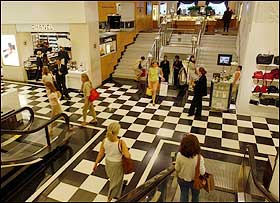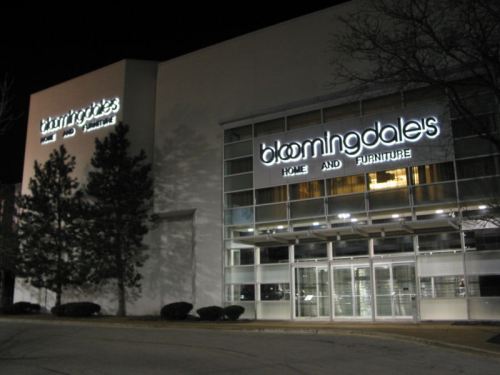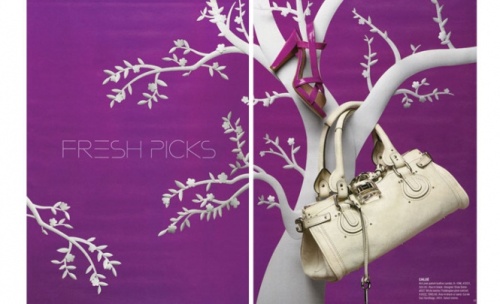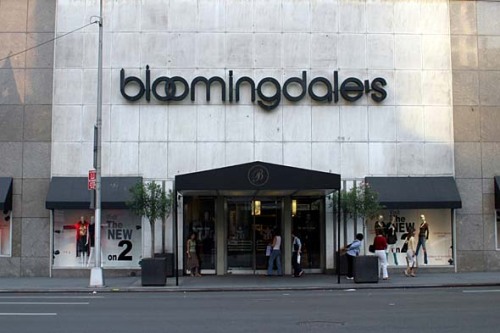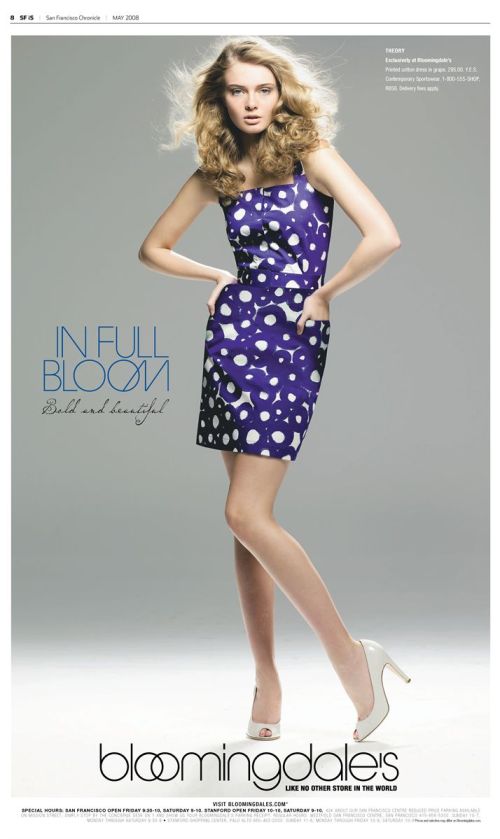Bloomingdale’s New York
Bloomingdale’s (or Bloomie’s) is a beautiful chain of upscale ,attractive American department stores owned by Macy’s Inc., which is also the parent company of Macy’s. Bloomingdale’s has 36 stores nationwide, with annual sales of $1.9 billion. It is at a slightly higher price level than lord & Taylor,Nordstrom,and the former Parisian, and slightly below that of Saks Fifth Avenue,Neiman Marcus, Bergdorf Goodman and Barneys New york.It has a deserved reputation for class , style and distinction.
Bloomingdale’s started in 1861 when brothers Joseph and Lyman G.Bloomingdale started selling hoop-skirts in their Ladies Notions’ Shop on Manhattan’s lower East Side while their father peddled the highly fashionable hoop-skirts along the Eastern Seaboard. The pair were sons of Benjamin Bloomingdale, a Bavarian-born salesman who had lived in North Carolina and Kansas, and settled in New York City.
As the popularity of the hoop-skirt was declining, the brothers opened their East Side Bazaar in 1872 in a small, ordinary row house on Third Avenue and 56th Street, selling a variety of garments such as ladies’ skirts, corsets, “gent’s furnishings”, and European fashions. Their location and merchandise was a bold statement for their time. At the time the East Side was a working-class neighborhood with shantytowns, garbage dumps, and stockyards. Most of their customers and competitors were in the Upper West Side, and at that time most respectable stores only specialized in one trade.
The brothers must have been aware that the neighborhood was changing. Within a few years after opening the store, the Metropolitan Museum of art opened, the new St.Patrick’s Cathedral was dedicated near the store after moving from its downtown location, Central park would be completed, and the New York subway system would begin construction. These additions brought wealthy customers to the East Side and built their brownstones that surrounded the new park.
As the store and its success grew, it moved in 1886 to its current location on 59 th Street and Lexington Avenue. The store was designed with large plate glass display windows and spacious merchandising areas. The two innovated a Bloomingdale’s trademark with the presentation of merchandise. Instead of the common practice that cluttered the display windows with an assortment of the goods they sold, each window was decorated with a couple of products as props on a theatrical mise-en-scene. Many of these products were European imports, which added to the store’s elegance.
By the turn of the century, Bloomingdale’s growth skyrocketed, facilitated by its convenient location at a hub of New York City’s horse-drawn trolley system. Offerings at the time ranged from ladies’ stockings at 10¢ a pair to $10 men’s wool suits and $149 upright pianos. In 1902, the advertising slogan “All Cars Transfer to Bloomingdale’s” capitalized on the store’s location, and the company commissioned artist Robert F. Oucault to create a series of paintings around the theme. The slogan appeared on billboards and on 5,000 free beach umbrellas offered to street vendors and delivery cart drivers.
Around 1905, hard times hit as the popular upper class shopping area moved downtown along Sixth Avenue between 14th and 23rd Streets. In 1913, the 58th Street Station of the Lexington Avenue subway was constructed in Bloomingdale’s basement, further reinforcing the “All Cars Transfer to Bloomingdale’s” slogan, and business recovered. By the 1920s, the store covered the entire city block.
In 1930, Bloomingdale’s joined Federated Department Stores, now Macy’s, Inc. In 1931, the Bloomingdale’s building, which had grown by spurts and starts to engulf the entire block, was completely redesigned as a coherent store by architects Starrett & van Vleck in the Art Deco style. The store weathered the Great Depression and World War II. In 1949, Bloomingdale’s inaugurated its first branch store in the Fresh Meadows section of Queens. Over 25,000 people came through the store on opening day.
In 1961, the company started marketing itself with designer shopping bags to promote its “Esprit de France” exhibit. The design, by artist Jonah Kinigstein, was a reproduction of French tarot cards in dramatic shades of red, black, and white. The iconic “Brown Bag” debuted a decade later in 1973. The bags were designed by Michael Vollbracht, the current designer for Bill Blass Couture, and prominently labeled in three sizes: “Little”, “Medium”, and “Big”.
In 1969 Bloomingdale’s was outgrowing its flagship store and management focused on managing space in the flagship and expanding through suburban branch stores. Two branch stores opened in Garden City,New York on Long Island, and Jenkintown,Pennsylvania. Bloomingdale’s launched home furnishing stores on the East Coast with products from the flagship’s home furnishings department.
According to a survey taken around 1972, over 60 percent of its customers lived and worked in the luxury high-rise apartment and office towers nearby. Bloomingdale’s catered to the neighborhood’s young and affluent professional class by capitalizing on the popular trends of the day from pet rocks to glacial ice cubes. Also around this time, the careers of fashion designers such as Ralph Lauren,Perry Ellis, and Norma Kamali were launched, and opened in-store boutiques for other well-known designers.
Bloomingdale’s capitalized on its relationship with the young and trendy by stamping the name “Bloomie’s” on ladies’ panties as part of its launch for intimate apparel in 1973. The rising popularity launched Bloomingdale’s into a major tourist destination, and articles stamped with “Bloomie’s” became hot souvenirs. During Queen Elizabeth II’s visit to New York City in 1976, traffic was reversed on Lexington Avenue so the Queen could exit her vehicle on its right side and enter the famous Manhattan flagship through the main entrance. Her visit cemented the popularity of the store.
Sales continued to grow and branch stores continued to open outside of New York City in the late 1970s. The Bloomingdale’s By Mail catalog launched in 1978 which expanded the store’s reach to high-income households across the United States where no Bloomingdale’s stores existed.
The retail market boomed in the 1980s. New stores opened along the East Coast, Florida,California, and in Dallas,Texas (which did well upon opening but closed because of Chapter 11 bankruptcy).
Expansion in the 1990s included a 1992 opening of its 15th store in the Mall of America near Minneapolis,Minnesota, and establishing a presence in California in 1996 with four stores.
The chain fortified its presence in the southeastern U.S. with two Atlanta locations in 2003, converting the longtime Davison’s/R.H.Macy & Co. properties in Lenox Square and Perimeter Mall. In addition, after several years of struggling to understand the merchandise needs of the California market, it has recently begun refocusing on the state with high-profile openings in 2006 and 2007 in San Francisco,San Diego, and Costa Mesa. The San Francisco and Costa Mesa units were among the most successful openings in the chain’s history.
On February 14, 2008, parent company Macy’s, Inc. announced plans to enter the Phoenix market by 2009. Arizona will be the thirteenth state to have a Bloomingdale’s store location, with this store being the tenth in the western U.S., and 41st throughout the chain.
On September 10, 2008, Bloomingdale’s announced plans to open a 3-level, 82,000 square foot anchor store at The Shops at Georgetown Park in Washington D.C. by August 2011. The store is reported to be modeled after the chain’s concept store in New York’s SoHo neighborhood to carry select contemporary men’s and women’s apparel. With this annoucement Western Development Corp., owner of the property, believes Georgetown Park will become “the highest fashion and trend center in the whole Washington area.”
Twelve days later, the first proposed overseas locations for the chain were announced. A September 22, 2008, press release from Macy’s, Inc. told of plans for two Bloomingdale’s locations (a three-level 146,000 sq. ft. apparel and accessories store, as well as a separate one-level 54,000 sq. ft. home store) to open in February 2010 in Dubai,United Arab Emirates. As is the case for rival Saks Fifth Avenue, the international presence for Bloomingdale’s will be operated under license by a local interest — in this case, Al Tayer Group LLC, a leading UAE-based conglomerate.
The parent company of Bloomingdale’s (as well as Macy’s) —Macy’s,Inc. — is involved in a labor dispute regarding maquila workers in Guatemala. Workers in the Sitracima union allege intimidation and union-busting at their CimaTextiles factory. On 2 June 2007, a student protest at the downtown Seattle Macy’s and Talbots caused disruptions for shoppers.
Because it is part of Macy’s, Inc., Bloomingdale’s has also been the subject of a consumer boycott in response to the conversion of Marshall Field’s stores to Macy’s. The grassroots group FieldsFansChicago.org says the boycott will remain in effect until Marshall Field’s is restored as a unique store separate from Macy’s and Bloomingdale’s.
Hello world!
Welcome to WordPress.com. This is your first post. Edit or delete it and start blogging!

